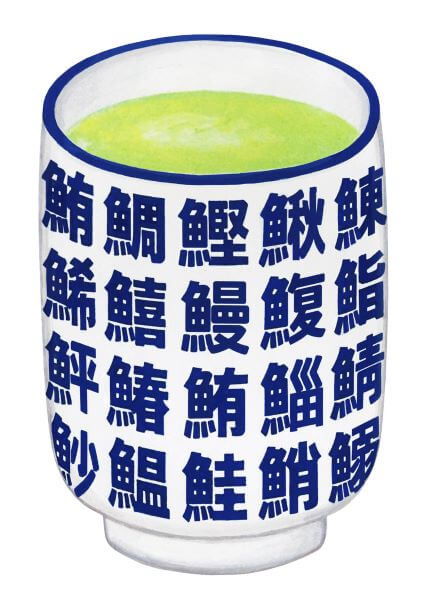
The large teacups commonly seen at sushi restaurants are often called sushi yunomi (寿司湯呑み). Their distinctive size is one of the unique features of sushi culture, and the reasons behind it are both practical and historical.
This practice’s origins can be found in the street stands leftover from before WWII. It was a natural remedy for the outdoor sushi vendors who set up street booths and needed a way to maintain heat in their drinks in order to make it through the cold. In addition to lack of convenient access to water, these stands were one-man operations, and the time that serving tea takes away from his time making sushi were also contributing factors. In other words, the reason the teacups are large is natural wisdom of sushi shops from long ago.
In sushi culture, this tea is called agari, and it is considered an essential part of the meal. Also, hot tea has the effect of dissolving the fat that remains on the tongue after eating a fatty sushi topping, cleansing and preparing the palette for the next piece of sushi. This is a task that cannot be performed by beer or Japanese sake.
Then, large teacups became one of the special features at sushi restaurants and a favorite feature among customers, so it wouldn’t make sense to go back to small teacups now. Beyond practicality, the large yunomi also came to symbolize the bold, generous spirit of sushi dining. Compared to the delicate teacups used at home, their size and sturdiness emphasize that eating sushi is a special, lively experience.
However, times change. There are now sushi restaurants that use relatively small teacups that they change with each refill in an attempt at a sort of stage effect. There are even places that have the teacups imprinted with the restaurant name, phone number, etc. and hand them out to favorite customers. This has tremendous advertising effects.
There are various production sites, but most that are mass-producing are located around the Toki area of Gifu prefecture and the more expensive but also relatively more durable tend to be Arita ware from Saga prefecture. There are wide varieties in shape and pattern, but despite the preference for large teacups at sushi restaurants, there is such a thing as cups that are too big and they are also harder to drink from. Also, thicker cups may be more durable, but they are also harder to drink from. Even when made thick, the rim should be thinner. The cylinder shape is hard to clean and the bottom of the cup tends to be stained by the tea. My personal opinion is that it is hard to find what I would call a refined teacup with a nice color and shape. But the worst is when a thin teacup or tea bowl gets too hot to hold.
Related contents:
GREEN TEA THAT PAIRS WITH SUSHI
[sc_apply url=”https://sushiuniversity.jp/apply/”]
We hope this information will be helpful.

Revision date: August 30, 2025
Share this article